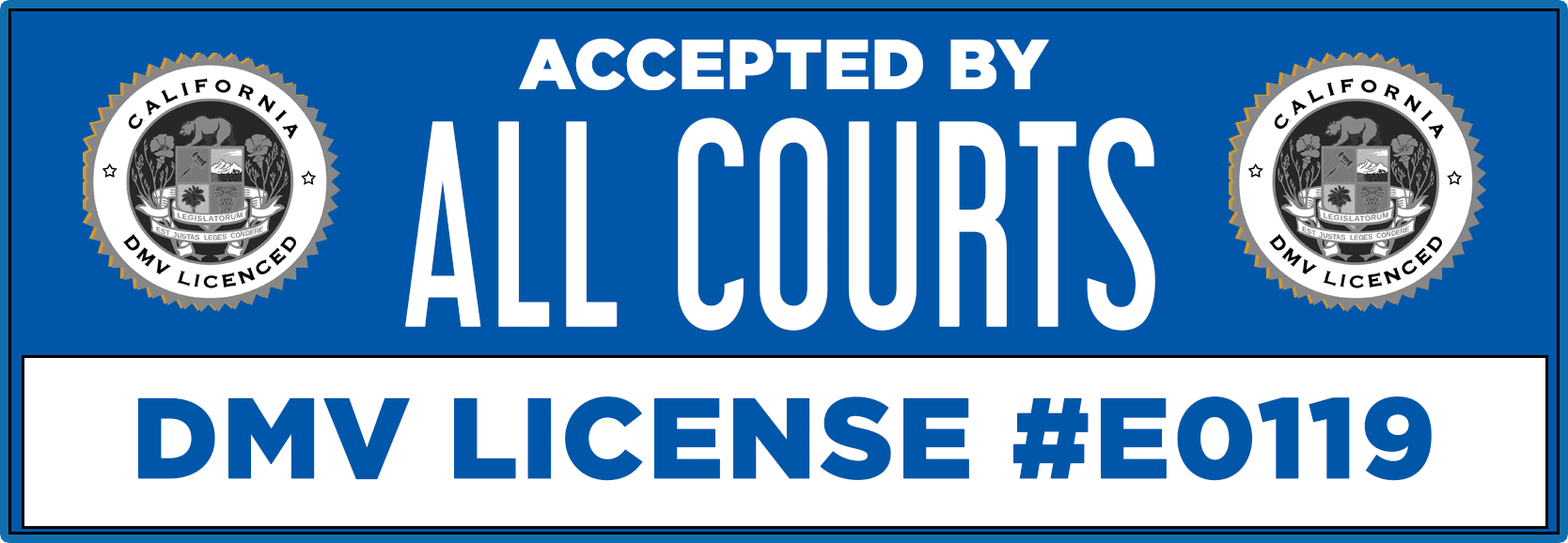Unsafe overtaking is a leading cause of road accidents globally, with a significant number of fatal collisions attributed to drivers misjudging the speed and distance of oncoming traffic. In the United States alone, the National Highway Traffic Safety Administration (NHTSA) reports that improper passing contributes to thousands of crashes every year. Understanding how to pass safely is essential for all drivers to reduce these incidents and protect not only themselves but also other road users.
In this article, we’ll explore what it means to overtake and pass safely, review relevant state and California driving laws, and discuss when it is appropriate to pass another vehicle. We will also provide a detailed step-by-step guide on how to execute a safe overtaking maneuver. Whether you’re a new driver or simply want to brush up on your road safety skills, this guide will help you make informed decisions on the road.
What is Overtaking and Passing Safely?
Overtaking involves moving past a slower vehicle traveling in the same direction, but passing safely means completing this maneuver without endangering yourself or others. Understanding the difference is crucial for maintaining road safety.
Definition of Overtaking: Overtaking is the act of moving past another vehicle traveling in the same direction. This maneuver typically occurs on multi-lane roads where faster-moving vehicles need to bypass slower-moving ones. The key objective of overtaking is to ensure smooth traffic flow without causing disruptions or posing risks to other drivers.

Definition of Passing Safely: Passing safely means completing the overtaking maneuver without endangering yourself, the driver being overtaken, or other road users. It requires careful judgment, adequate space, clear visibility, and adherence to traffic laws. Safe passing is about timing your maneuver correctly and ensuring that the road conditions allow for a smooth and hazard-free execution.
Importance of Passing Safely
Unsafe passing can lead to severe consequences, including head-on collisions, which are often fatal. Misjudging the speed or distance of oncoming traffic or attempting to pass in no-passing zones can result in accidents that could have been easily avoided. Therefore, understanding and practicing safe passing techniques is crucial for every driver.
State and California Driver Laws on Passing Safely
Each state has specific laws governing when and how drivers can pass other vehicles safely, with California imposing additional regulations to ensure clear visibility and sufficient space during overtaking maneuvers.
General State Laws: In most states, the general rules for safe passing include:
- Passing on the Left: You must overtake another vehicle on the left side, ensuring that the left lane is clear of oncoming traffic.
- No Passing Zones: Solid yellow lines indicate no-passing zones, often found on curves, hills, or areas with limited visibility. It is illegal to pass in these zones.
- Clearance: You must have a clear view of the road ahead and ensure there is no oncoming traffic for the duration of the pass.
- Signaling: Always use your turn signals to indicate your intention to pass and return to your lane.
California Specific Laws: California has specific regulations outlined in the California Vehicle Code that drivers must follow:
- Overtaking on the Left (CVC §21751): This law requires drivers to pass on the left only when the left side is clearly visible and free of oncoming traffic for a sufficient distance.
- Passing Bicyclists: The “Three Feet for Safety Act” mandates that drivers must leave at least three feet of space when overtaking bicyclists. If it’s not possible, drivers must slow down and pass safely.
- Passing on the Right (CVC §21755): Passing on the right is only permitted when the vehicle ahead is making a left turn, and the roadway is wide enough to allow it safely.
Penalties for Unsafe Passing: Violating passing laws in California can lead to fines, points on your driver’s license, and even increased insurance premiums. Repeat offenders may face harsher penalties, including license suspension. It’s essential to know and follow these laws to avoid legal consequences and ensure road safety.
Common Examples of Needing to Pass
Here are some common examples of when you should pass another vehicle:
- Slow-Moving Vehicles: When you’re behind a vehicle traveling significantly below the speed limit, such as a tractor or a large truck, and it’s safe and legal to do so, passing can help maintain the flow of traffic.
- Passing a Bicyclist: If a bicyclist is traveling on the road and there is enough space to pass safely, you should overtake them with a minimum of three feet of clearance.
- Avoiding a Hazard: If the vehicle ahead is swerving, experiencing mechanical issues, or otherwise posing a hazard, passing them when it’s safe can help you avoid potential danger.
- Merging or Entering Highways: When merging onto highways or entering from an on-ramp, passing slower-moving vehicles can be necessary to safely blend into the faster-moving traffic flow.
- Passing in the Left Lane: On multi-lane roads or highways, if you’re traveling in the left lane and the vehicle ahead is moving slower than the speed limit, you may pass them safely in the right lane if local laws permit.
4. When is it Appropriate to Overtake and Pass?
Passing should only be attempted when conditions are safe and legal, such as on clear, straight roads with no oncoming traffic. Knowing when it’s appropriate to pass can help prevent accidents and ensure a smoother traffic flow.
Situations Where Overtaking is Safe:
- Clear Visibility: You should only attempt to pass when you have a clear view of the road ahead for a sufficient distance. This means no sharp curves, hilltops, or blind spots.
- Sufficient Space: Ensure there is enough room to safely re-enter your lane after passing. The rule of thumb is that you should be able to see the entire vehicle you’ve overtaken in your rearview mirror before moving back into the lane.
- No Oncoming Traffic: It’s safe to pass when there is no oncoming traffic for the distance you need to complete the maneuver.
- Straight Road Conditions: Straight roads provide the best visibility and safety for passing. Avoid overtaking on curves or uneven terrain.
Situations to Avoid Overtaking:
- Near Intersections and Crosswalks: Never pass at intersections, crosswalks, or areas with high pedestrian activity, as unexpected stops and turns can occur.
- No-Passing Zones: Marked by solid yellow lines, these zones are designated because passing is too risky. Obey these signs and avoid overtaking.
- Following Emergency Vehicles or School Buses: It is illegal and unsafe to overtake emergency vehicles or school buses with flashing lights.
- Adverse Weather Conditions: Rain, fog, snow, or any other adverse weather conditions that reduce visibility and traction make passing highly dangerous. It’s best to wait until conditions improve.
Step-by-Step Guide: How to Pass Safely
Successfully passing another vehicle requires careful planning and precise execution. Follow these step-by-step instructions to complete the maneuver safely and responsibly.
Step 1: Assess the Situation
- Before initiating a pass, evaluate whether it is safe and legal to do so. Check for road signs indicating no-passing zones and assess the traffic flow. Make sure you have a clear line of sight for a sufficient distance and that no vehicles are approaching from the opposite direction.
Step 2: Signal Your Intent
- Turn on your left turn signal to notify other drivers of your intention to pass. Check your mirrors and blind spots to ensure no vehicles are trying to overtake you. It’s crucial to communicate your plans to other road users to avoid confusion and potential accidents.
Step 3: Move to the Left Lane
- Once you’ve confirmed it’s safe to proceed, gently steer into the left lane. Increase your speed slightly, staying within the speed limit, to minimize the time you spend in the oncoming lane. Avoid swerving or sudden movements that could startle other drivers.
Step 4: Execute the Pass Quickly and Safely
- Pass the vehicle smoothly and efficiently without exceeding the speed limit. Do not linger beside the vehicle you’re overtaking, as this increases the risk of a collision. Maintain a safe distance from the vehicle you’re passing to avoid any potential contact.
Step 5: Return to the Right Lane
- After overtaking, signal your intention to return to the right lane. Ensure you can see the entire front of the overtaken vehicle in your rearview mirror before merging back into your lane. This ensures a safe distance between your vehicle and the one you’ve passed.
Step 6: Resume Normal Speed
- Once you have safely returned to your lane, turn off your signal and adjust your speed to match the flow of traffic. Be mindful of other vehicles around you and continue driving safely and responsibly.
When is Passing Illegal?
As far as driving goes, illegal and dumb are really just the same thing. Traffic laws are instituted to protect you. As you examine these rules, you may wish to consider this fact: At 60 mph, a driver will travel 132 feet in 1.5 seconds (60 mph is 1 mile per minute, or 88 ft. a second!). At that speed, if you collide with another vehicle, you needn’t worry about getting a ticket. Chances are very good that a ticket will never be issued. The police do not give tickets to seriously injured or dead people. The following situations are examples of when passing can be dangerous if not deadly…
Special Situations
- A driver may not pass within 100 feet of a railroad crossing.
- A driver may not pass within 100 feet of, or in the middle of, an intersection.
- Drivers may not pass on a curve (even a slight curve) when they cannot see far enough to guarantee safety.
- Drivers may not pass while ascending a hill when they cannot see far enough to pass safely. Remember, a driver’s ability to accelerate away from danger is impaired while ascending a hill.
- Drivers may not pass within 100 feet of a bridge, abutment, tunnel, or viaduct when their view is impaired or when there is no available escape route should they meet an oncoming vehicle.
- Drivers may not pass Class A and Class B vehicles (such as large trucks and RV’s) on the right. These vehicles should always be passed on the left.
Dangerous Situations
- Drivers may not pass if passing safely requires them to exceed the posted speed limit.
- Drivers may not pass when there is not ample safe passing distance between them and on-coming vehicles.
- A driver may not pass when a cyclist, pedestrian, or parked vehicle is along the shoulder of the road. Can you see the reason why? In a sudden emergency situation, the vehicle being passed has no room to evade safely.
- A driver is not allowed to drive his or her car to the left of the center line during normal circumstances but may do so to pass another vehicle when legal.
- Drivers may not pass if there is a long line of vehicles ahead.
- For safety reasons, it is not a good idea for drivers to pass another vehicle if they are unable to pass vehicles before reaching a no passing zone.
- Drivers may not pass if their intention is to stop or turn shortly after completing the pass.
Being Passed by Another Vehicle.
Except when passing on the right is permitted, the driver of an overtaken vehicle is required to yield in favor of the overtaking vehicle on audible signal or the momentary flash of headlights by the overtaking vehicle and shall not increase the speed of his vehicle until completely passed by the overtaking vehicle.
Conclusion
Passing safely is a critical driving skill that requires careful judgment and adherence to traffic laws. By understanding what constitutes safe overtaking, knowing the relevant laws, and following the step-by-step guide, you can minimize the risks associated with this maneuver. Always prioritize safety over speed and never attempt to pass if conditions aren’t ideal.
Remember, patience and caution can prevent accidents and save lives. If you find this information helpful, share it with fellow drivers, especially those who are new to driving or might benefit from a refresher on safe passing techniques.
FAQs
Can I pass on the right in certain situations? Yes, passing on the right is allowed in specific situations, such as when the vehicle ahead is making a left turn, and there is enough space to pass safely on the right. However, this should be done with caution and only when the road conditions permit.
What should I do if another vehicle is trying to overtake me? If another vehicle is trying to overtake you, maintain your speed and position in your lane. Do not speed up or obstruct their attempt to pass. Allow them to complete the maneuver safely.
Are there different rules for passing bicycles? Yes, drivers must provide at least three feet of clearance when passing a bicyclist. If there isn’t enough space, you should slow down and pass when it’s safe to do so.
What happens if I get caught for illegal passing? Illegal passing can result in fines, points on your driver’s license, and increased insurance premiums. Repeated offenses may lead to more severe penalties, such as license suspension. Always adhere to passing laws to avoid these consequences.
Safe passing is a vital skill that requires careful judgment, adherence to traffic laws, and respect for other road users. By understanding the rules and guidelines for overtaking and knowing when and how to pass safely, drivers can significantly reduce the risk of accidents and contribute to a safer driving environment. Always prioritize safety over speed and make thoughtful decisions to protect yourself and others on the road.
For more information, please take our course at Comedy Traffic School .COM





